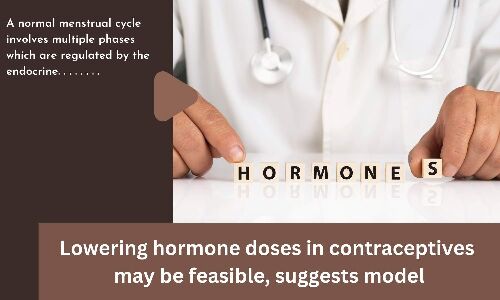A normal menstrual cycle involves multiple phases which are regulated by the endocrine system and influenced by levels of various hormones. The most contraceptive approaches, including pills, injectables and implants, involve the administration of exogenous estrogen and/or progesterone to block ovulation-the phase of the cycle in which an egg is released into the uterus.
The dosage of hormones in common contraceptives could be reduced by as much as 92% and still effectively suppress ovulation, according to a computational model described this week in PLOS Computational Biology by Brenda Lyn A. Gavina, PhD student at the University of the Philippines Diliman, and her collaborators.
In the new study, researchers used data on hormone levels in 23 women aged 20 to 34 with normal menstrual cycles. The team developed computational models depicting the interactions between various hormone levels as well as the impacts of exogenous hormones.
The model provided evidence that it is possible to reduce the total dose by 92% in estrogen-only contraceptives, or the total dose by 43% in progesterone-only contraceptives, and still prevent ovulation. By combining estrogen and progesterone, the doses of each hormone could be reduced even further. In addition, the model showed the importance of timing the hormones during the cycle, pointing toward ways that exogenous estrogen and progesterone could be given during only certain phases of the menstrual cycle rather than at steady constant doses.
“These results may give clinicians insights into optimal dosing formulations and schedule of therapy that can suppress ovulation,” the authors say.
Reference:
Gavina BLA, de los Reyes V AA, Olufsen MS, Lenhart S, Ottesen JT (2023) Toward an optimal contraception dosing strategy. PLoS Comput Biol 19(4): e1010073. https://doi.org/10.1371/journal.pcbi.1010073




GIPHY App Key not set. Please check settings